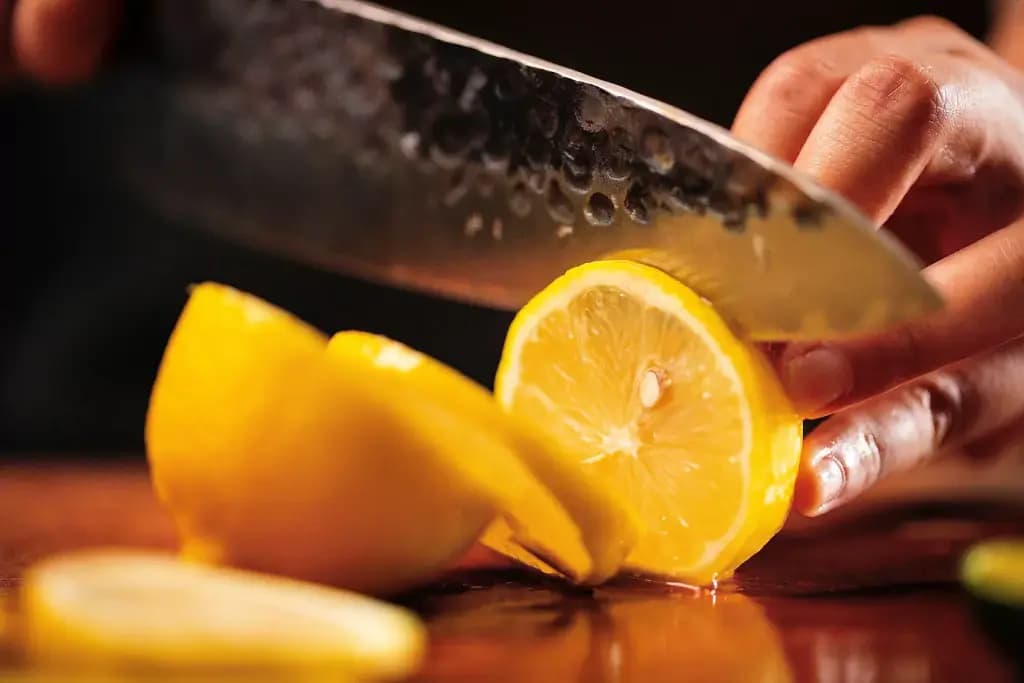

2025 SEPTEMBER 29
.Thuy Fang
Knife Storage Options Every Cook Should Know!
When you own a fine set of knives, preserving their beauty and ensuring every movement is smooth and precise is crucial. Knowing how to store knives is one of the most essential ways to protect them. Let’s look at four popular knife storage methods to keep your kitchen safe, convenient, and elegant!
Saya Sheaths
Saya sheaths are wooden covers made to protect knives. They are carefully shaped to match each blade and keep it safe. Unlike other knife storage options, a saya adds safety and beauty, while still being very practical. A small wooden pin keeps the blade secure inside, so it never slips out during use or travel. This makes carrying or storing knives much safer for everyone.

Made from breathable magnolia wood, saya sheaths protect blades from rust and moisture. The wood is light, strong, and gentle on sharp edges, so knives stay sharp longer. Many cooks admire them not only for safety but also for their natural look. Some saya even use felt linings for extra care, giving knives a soft resting place. This touch keeps blades smooth, shiny, and ready for the next dish.
Saya sheaths are most loved for travel or drawer storage. They stop blades from scratching each other and prevent accidents when reaching for tools, a clear advantage over bulky blocks or metal bars. However, they are usually made for one specific knife shape so you may need more than one.
Blocks
A knife block is a solid stand designed to hold many knives in one place. It’s one of the most common forms of knife storage, often made from wood such as bamboo, acacia, or walnut. Each slot is cut to fit a specific knife, from a chef’s knife to a bread knife, and sometimes even kitchen shears. This design keeps your knives safe and makes your countertop neat.

One of the biggest highlights of a block is convenience. Every knife has its own home, so you can quickly find the right tool when cooking. A good block also protects the blades from bumping into each other, which helps keep them sharp for longer.
However, there are also some downsides. Blocks occupy counter space, and the pre-made slots may not fit every knife shape or size. If not done carefully, sliding blades in and out can slowly dull the edge. Also, the dark slots can trap moisture and allow germs to grow if knives are put back while damp. For this reason, cleaning and drying your knives before storing them is very important.
Are you looking for amazing knives for your kitchen? Check out ZAKU! ZAKU has authentic knives handmade in Japan for all of your culinary needs!

Knife Rolls
Unlike bulky blocks, this form of knife storage is made for chefs who travel, letting them easily bring their tools anywhere. A knife roll is a portable case designed to carry and protect knives. It’s often made of strong leather, canvas, or other durable fabrics. Inside are individual slots for each blade, keeping them safe from scratches.

The biggest attraction of a knife roll is its portability. You can roll it up, tie the straps, and carry it like a bag. Many chefs use them daily when moving between kitchens, catering events, or cooking outdoors.
In addition, the design also keeps knives stored horizontally, which helps protect their sharp edges and avoids accidents. Some rolls look stylish, almost like a artisan’s toolkit, making them very appealing. Yet, one drawback is that accessing a single knife takes extra steps, and knife rolls usually cannot store huge sets.
Magnetic Strips
They are wall-mounted bars that use powerful magnets to hold knives in place. This is one of the most space-saving forms of knife storage, keeping blades neatly displayed in a row. Many chefs admire it for its professional look, as it makes every knife visible and easy to reach. With one glance, you know exactly which tool to grab!

Knives are always within reach, and the open-air storage helps keep them dry and clean. This avoids the hidden moisture problems of blocks or drawers. High-quality strips utilize strong neodymium magnets, often concealed within wood or leather, to protect blades from scratches while maintaining a secure hold.
Of course, magnetic strips also have some drawbacks! If placed too low, they can be dangerous for children or pets since blades are exposed. Cheaper strips may lose strength, causing knives to slip and risk damage. They also cannot hold ceramic knives; removing a blade with poor technique can stress the tang over time. To keep knives safe, installing the strip high and using gentle rolling motions when placing or removing them is best.
Why should I care about knife storage?
Paying attention to knife storage is not only about keeping blades sharp, but also about keeping your kitchen safe and calm. A well-crafted set of knives deserves more than being thrown into a drawer or left in a messy pile. Good storage prevents scratches, rust, and accidents, making your kitchen look organized. Each option has pros and cons, so knowing what fits your cooking style and space is key.
For someone who values tradition and travel, saya sheaths or rolls may be perfect, for a busy home kitchen, blocks or strips bring more convenience. What matters most is that knives are stored with care, not neglected. So, how do you like to keep your knives safe? Let me know your thoughts in the comments!


















